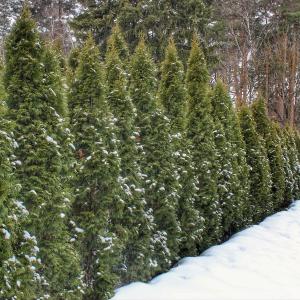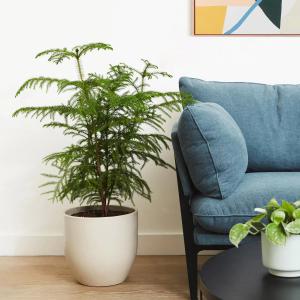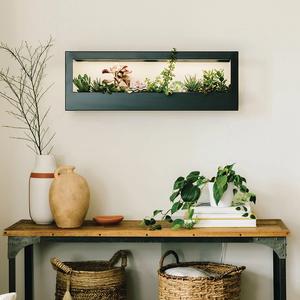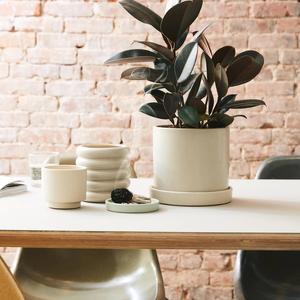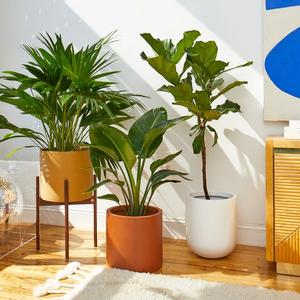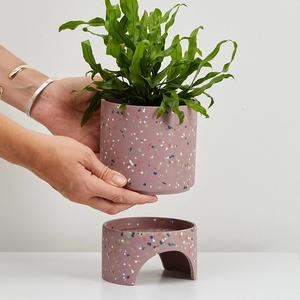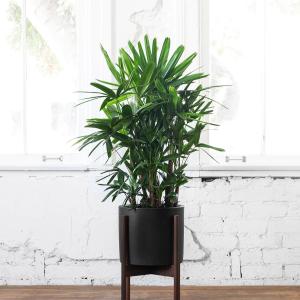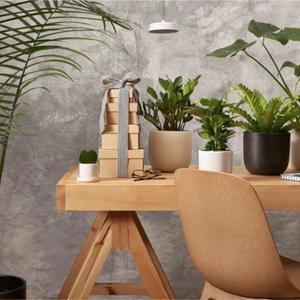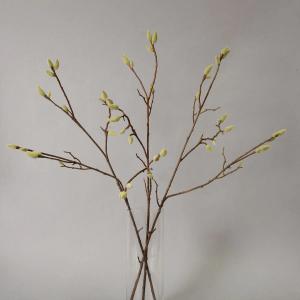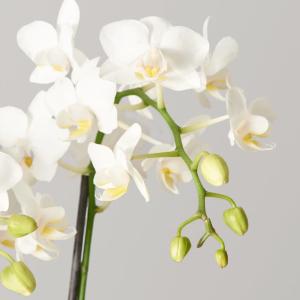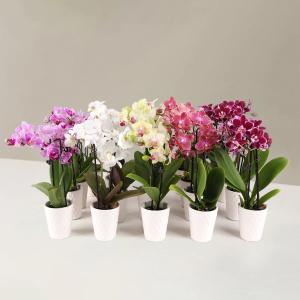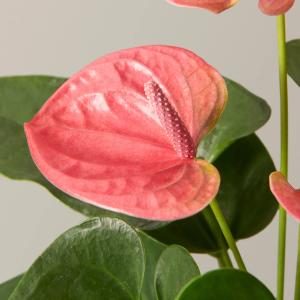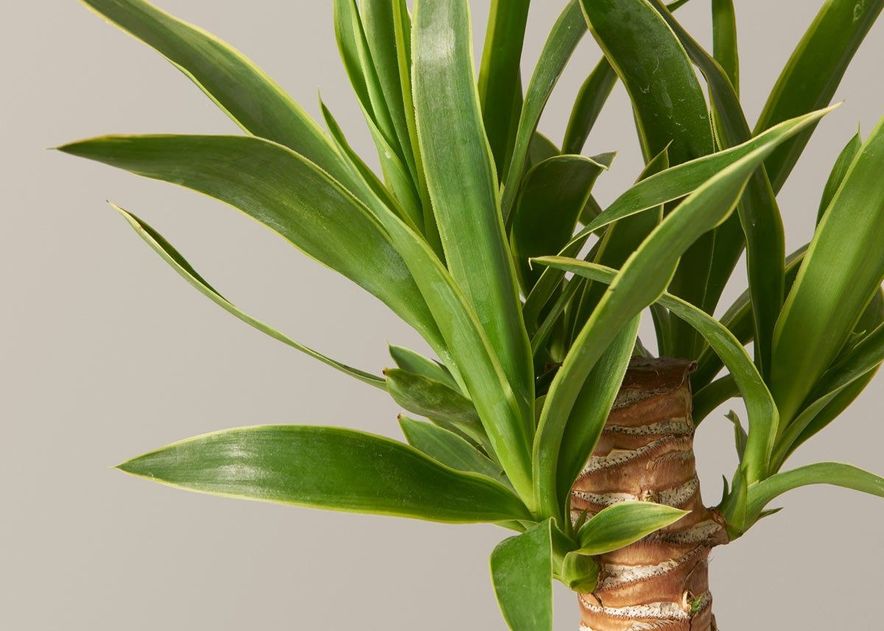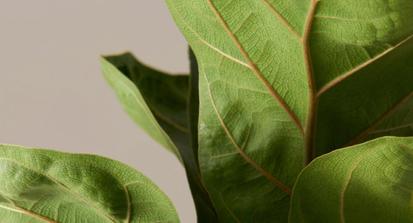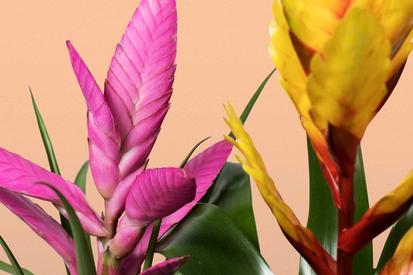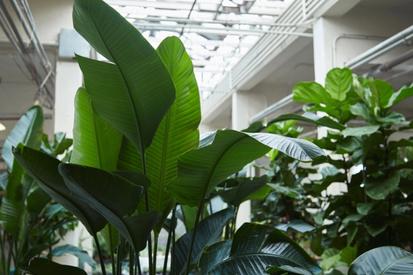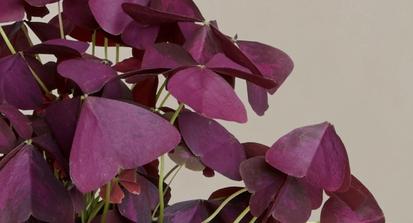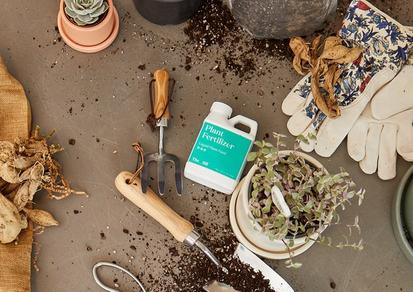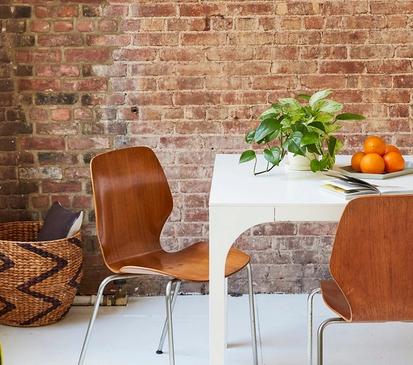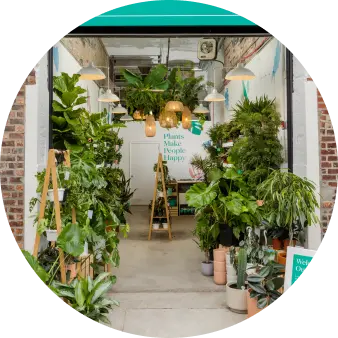Of the about 50 species of yucca, three main categories of yucca plants exist. Only one is suitable for a houseplant. The Adam’s Needle and Spanish Bayonet species work only as outdoor landscape plantings, as their large size and sharp needles can injure people passing by.
The spineless yucca ranks as the only yucca plant available to grow indoors. This dwarf tree resembles its larger outdoor cousins and has a similar low-maintenance reputation.
Yucca plants require a bit of research to help them thrive. Read on to learn the basics of how to care for a yucca plant, including watering, choosing soil, and advanced techniques like propagating and trimming your yucca.
What Is a Yucca Plant
Yucca plants are indigenous to the hottest, driest climates of North and South America and throughout the Caribbean. Some wild-growing yuccas grow up to 30 feet tall with enormous sword-shaped leaves. These evergreen, resilient trees can puncture people passing by and should be treated similarly to a cactus.
The spineless yucca is native to Mexico and brings the best features of a yucca plant to a manageable indoor houseplant species. Thick, bare trunks rise a few feet from the planter pot, featuring a spray of green and blue-green spikes of leaves on top. These leaves usually stand straight but are not rigid or damaging to the touch like the outdoor yuccas.
Pups, or new growths, readily pop up along the trunk of the yucca plant. This fast-growing plant ranks as one of the easiest to propagate, similar to a succulent.
How To Trim a Yucca Plant
These rapidly-growing plants need pruning to maintain a reasonable size for your indoor space. However, it is a slightly unusual way to prune this tree. Even intermediate-level gardeners need to fully understand the unorthodox way to trim a yucca plant.
Instead of pruning back the leaves of a yucca, gardeners must trim the trunk instead. Gently lift the plant from its pot and use a saw to cut the yucca’s trunk in half. Then repot your plant and generously water it.
Within a few weeks, you will notice new pups and leaves on your yucca. This means your plant is growing again but is overall several inches or a few feet shorter.
Light
Yucca is a resilient and tolerant plant but does not fare well in spaces with low to zero natural light. Besides this requirement, your yucca plant will enjoy bright, indirect light. Choose a spot that receives low to medium light to encourage your yucca to grow more slowly.
How Often To Water a Yucca Plant
These plants are native to dry and unforgiving spaces in the Western Hemisphere. That means plant parents can opt for watering less often rather than more often. The rule of thumb with your yucca plant is that overwatering is probably the only way to kill it.
Instead of relying on a consistent watering schedule, touch the top of the soil to see how dry it is. If the dirt sticks to your fingers, it is still damp and doesn’t need to be watered. If your fingers come back dry, consider watering your plant.
Keep an eye on the drainage hole at the bottom to know when to stop. Once you see water flow from the bottom, your plant is adequately watered.
Humidity
Keeping with its low-maintenance reputation, the yucca plant requires no additional humidity assistance than what naturally occurs in your home. Feel free to include your yucca plant with the other plants near a humidifier or receive an occasional misting, but this is not required.
Temperature
A yucca thrives in desert environments, where extreme temperatures are an everyday occurrence. Unlike many other common houseplants, the yucca tolerates a much wider span of temperatures.
Normal indoor home temperatures from 65 to 75 degrees Fahrenheit suit a yucca plant just fine, but even temperatures as low as 50 degrees or up to 90 degrees do not faze this resilient plant. Because of this fact, many people choose to move their yucca plant to an outdoor patio or three-season room in the spring and summer months.
Soil
The solid trunk of a yucca plant and its aggressive growth habit means a heavy soil mixture is needed to keep this vigorous plant standing upright. Well-draining soil is also required for a yucca, like most indoor houseplants. Try a mixture of three parts sand to one part peat to help provide an ideal formula for your yucca plant.
There’s no need to worry about repotting your rapidly expanding yucca plant. This plant tolerates being root bound and crowded, so consider replanting only about once a year.
How To Propagate a Yucca Plant
There are two ways to grow new yucca plants from your happy houseplant. First, explore the root system to see if you can split the rhizomes. These should separate easily into individual root balls. Keep these lightly damp until new roots establish in separate pots.
Along the trunk, a yucca plant grows pups or new growths. Once these pups turn green, they can survive independently. Carefully slice off a pup and plant it into its own pot. Tend to it like a full-grown yucca plant. Be careful not to overwater.
Common Problems
The resilient yucca plant poses few problems to indoor houseplant beginners and enthusiasts. Pay attention to pest infestations on your indoor plants, like mealybugs or fungus mites.
Level of Difficulty
Because of how fast it grows, a yucca plant can demand a bit more maintenance than other indoor houseplants. Pruning and repotting a yucca from time to time is necessary to maintain consistent and healthy growth.
Besides these infrequent tasks, once you know how to care for a yucca plant, it requires very little regular tending. A tough desert plant, yucca plants require no elaborate watering, pest control, or humidity requirements.
Conclusion
The dramatic yucca plant makes a strong, vertical statement in the bright rooms of your home, like a sunny kitchen or even soaking up the morning sun outdoors on the patio. Now that you know how to care for a yucca plant, you can try this low-maintenance desert plant to level up your plant knowledge. A few simple pruning and propagating tasks provide a rewarding and fast-growing plant to care for.
Words By The Sill
Empowering all people to be plant people—a collection of articles from The Sill’s team of plant experts across a variety of plant care topics to inspire confidence in the next generation of plant parents. Welcome to Plant Parenthood™.
